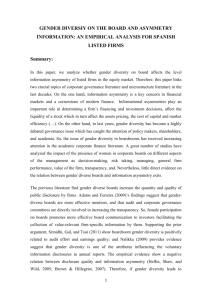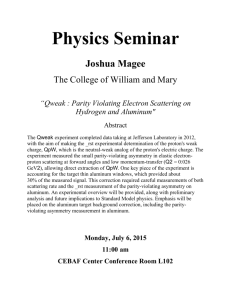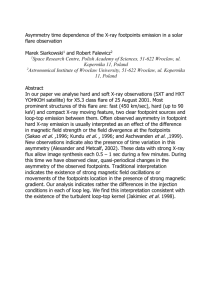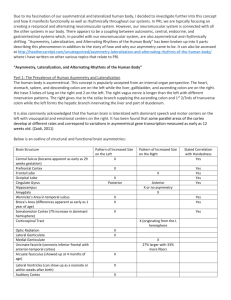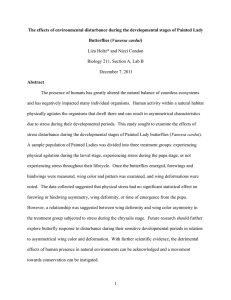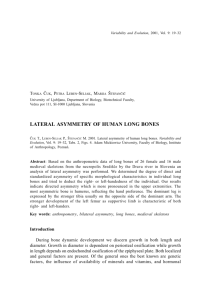Fluctuating asymmetry in plants: Is it a general indicator of stress
advertisement
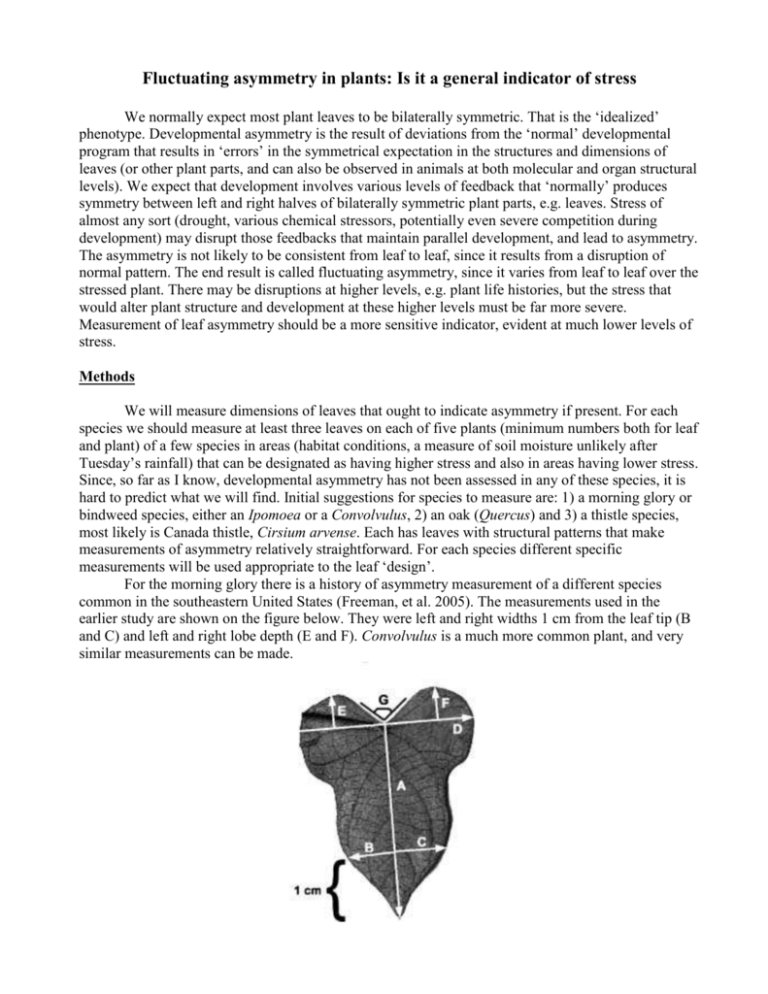
Fluctuating asymmetry in plants: Is it a general indicator of stress We normally expect most plant leaves to be bilaterally symmetric. That is the ‘idealized’ phenotype. Developmental asymmetry is the result of deviations from the ‘normal’ developmental program that results in ‘errors’ in the symmetrical expectation in the structures and dimensions of leaves (or other plant parts, and can also be observed in animals at both molecular and organ structural levels). We expect that development involves various levels of feedback that ‘normally’ produces symmetry between left and right halves of bilaterally symmetric plant parts, e.g. leaves. Stress of almost any sort (drought, various chemical stressors, potentially even severe competition during development) may disrupt those feedbacks that maintain parallel development, and lead to asymmetry. The asymmetry is not likely to be consistent from leaf to leaf, since it results from a disruption of normal pattern. The end result is called fluctuating asymmetry, since it varies from leaf to leaf over the stressed plant. There may be disruptions at higher levels, e.g. plant life histories, but the stress that would alter plant structure and development at these higher levels must be far more severe. Measurement of leaf asymmetry should be a more sensitive indicator, evident at much lower levels of stress. Methods We will measure dimensions of leaves that ought to indicate asymmetry if present. For each species we should measure at least three leaves on each of five plants (minimum numbers both for leaf and plant) of a few species in areas (habitat conditions, a measure of soil moisture unlikely after Tuesday’s rainfall) that can be designated as having higher stress and also in areas having lower stress. Since, so far as I know, developmental asymmetry has not been assessed in any of these species, it is hard to predict what we will find. Initial suggestions for species to measure are: 1) a morning glory or bindweed species, either an Ipomoea or a Convolvulus, 2) an oak (Quercus) and 3) a thistle species, most likely is Canada thistle, Cirsium arvense. Each has leaves with structural patterns that make measurements of asymmetry relatively straightforward. For each species different specific measurements will be used appropriate to the leaf ‘design’. For the morning glory there is a history of asymmetry measurement of a different species common in the southeastern United States (Freeman, et al. 2005). The measurements used in the earlier study are shown on the figure below. They were left and right widths 1 cm from the leaf tip (B and C) and left and right lobe depth (E and F). Convolvulus is a much more common plant, and very similar measurements can be made. For oak leaves different measures look promising to measure fluctuating asymmetry. Here the lengths of right and left hand lobes appear to indicate asymmetry. To avoid keying on one set of lobes, I suggest measuring the lowest and highest complete left and right hand lobes, as indicated in the scanned oak leaf shown below. For Cirsium arvense again measuring the lengths of lobes appears to offer the greatest potential to detect fluctuating asymmetry. In scanning this leaf, there was some difficulty getting its many lobes to all lie flat simultaneously. The suggestion is to measure the length of the lowest complete lobes (and possibly the lobes just below the tip region) along the axis defined by the midline vein on both the left and right sides of the leaf. Below is a scan to indicate these measurements: Remembering that the idea is that fluctuating asymmetry should increase with increasing level/intensity of stress or disturbance, we need some independent measure of stress. This does not need to be a quantitative measure; it can be a scale measure. I suggest we use a classification into higher stress and lower stress (though exactly how we decide what constitutes higher and lower levels of stress is not clear). Analysis We’ll use the methods developed by Freeman et al. (2005). They first note that leaves contribute to their own grown and expansion. Therefore any size-related measure needs to be corrected for size itself. This correction is done by taking natural logs of measures. What we therefore calculate as fluctuating asymmetry is: FA = |ln(left) – ln(right)| (The vertical lines mean that we use an absolute value, as opposed to a measure which could be positive or negative). Since this measure will comprise only half a normal distribution, there is a standard technique in statistics to fix that. The method is called a Box-Cox transformation. The calculation is: FA’ = (FA + .00005)1/3 We can then perform an ANOVA of fluctuating asymmetry as the dependent variable and an index of disturbance level/intensity as the predictor variable. Bibliography D. Carl Freeman, M. L. Brown, J. J. Duda, J. H. Graham, J. M. Emlen, A. J. Krzysik, H. Balbach, D. A. Kovacic, J. C. Zak. (2005) Leaf fluctuating asymmetry, soil disturbance and plant stress: a multiple year comparison using two herbs, Ipomoea pandurata and Cnidoscolus stimulosus. Ecol. Indicators 5:85-95. D. Carl Freeman, M. L. Brown, J. J. Duda, J. H. Graham, J. M. Emlen, A. J. Krzysik, H. Balbach, D. A. Kovacic, J. C. Zak. (2004) Developmental instability in Rhus copallinum L.: Multiple stressors, years, and responses. Int. J. Plant Sci. 165:53-63. Anders Møller and J. A. Shykoff (1999) Morphological developmental stability in plants: patterns and causes. Int. J. Plant Sci. 160(6 Suppl.):S135–S146. Anne Premchand, F. Mawri, S. Gladstone, D. Carl Freeman (1998) Is fluctuating asymmetry a reliable biomonitor of stress? A test using life history parameters in soybean. Int. J. Plant Sci. 159:559565.


